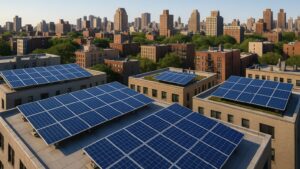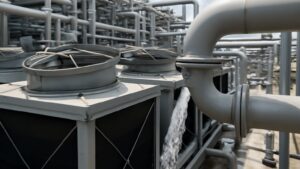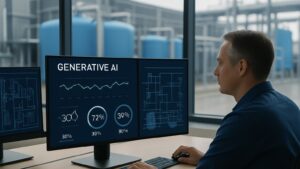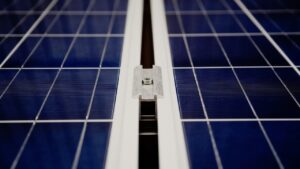The foundation of today’s digital infrastructure is made up of data centers. It holds vital computer resources and provides support for a multitude of services and applications. Furthermore, organizations’ generation and processing of enormous volumes of data has made the construction of scalable and effective data centers essential. The first variables considered during the data center design stage are critical. It decides these facilities’ long-term performance, affordability, and sustainability. So, let’s know about it in-depth:
Determining Capacity and Scalability Requirements
Evaluating the existing and anticipated computing capacity requirements is essential for a data center design project. The study should include the current workloads of the organization. Moreover, it should include the projected increase in data volume and processing requirements and any upcoming plans. This is for IT infrastructure development or consolidation.
Furthermore, scalability is essential because data centers need to be built to easily handle future expansion. Moreover, effective capacity growth can be facilitated by flexible architectures and modular design techniques. This is without necessitating significant overhauls or business interruptions.
Data Center Design: Site Selection and Location Analysis
The total performance and operational expenses of a data center are significantly influenced by its physical location. This is one of the typical design consideration for data center approach. So, the following elements need to be considered while choosing a site:
Power availability and cost
Since data centers use a lot of energy, they require dependable and reasonably priced power sources. It is important to take into account accessibility. It helps to backup power systems, renewable energy sources, and power grids.
Network connectivity
High-bandwidth, low-latency network connectivity is necessary for data centers. Moreover, evaluating the accessibility of different internet service providers is crucial. It is also important to assess the fiber optic infrastructure within the vicinity.
Environmental conditions
A data center’s design and operating expenses can be greatly impacted by variables. It includes local laws, the likelihood of natural catastrophes, and the environment. So, it can be necessary to take extra precautions and make expenditures in vulnerable areas. These are areas vulnerable to harsh weather or have strict environmental rules. Additionally, this is one of the key factors to look for when choosing a data center location
Early in the design phase, analyzing and choosing the best site can have a significant impact. This is on the overall effectiveness, dependability, and long-term operating expenses of the data center.
Data Center Architecture and Infrastructure Design
A data center’s architecture and infrastructure design include many different parts. Each of them has trade-offs and concerns of its own. Among the important things to think about are:
Centralized vs. distributed architecture
A distributed design disperses resources over several, smaller sites. Meanwhile, a centralized data center gathers computing resources into a single, big facility. So, the decision is based on variables. It includes disaster recovery, data redundancy, and end-user proximity.
On-premises vs. cloud
Companies have to decide between hosting their data center infrastructure locally and employing cloud services. Furthermore, cost, security, compliance, and the IT strategy of the company all play a role in this choice.
Modular or traditional design
The components of modular data center designs are prefabricated, standardized parts that are simple to scale or reconfigure. In traditional designs, a facility is built from the ground up. Furthermore, modular architectures frequently have advantages. This is in terms of flexibility, scalability, and deployment speed.
Cooling and power infrastructure
Systems for power distribution and cooling that are efficient are essential elements of data center architecture. Moreover, it is important to take into account various variables. it includes the integration of renewable energy sources, water and power consumption effectiveness, and power usage effectiveness.
Organizations can construct data centers that are in line with their unique operational requirements, commercial objectives, and long-term strategic goals. This is by carefully weighing these architectural and infrastructural factors.
Security and Compliance Considerations
Sensitive and vital data is stored in data centers. This is where security and compliance are of utmost importance. So, the first things to think about in terms of data center design are:
Physical security measures
Protecting against possible threats and unauthorized access requires integrating physical barriers. It also requires access control systems and surveillance systems into the architecture of the data center.
Cybersecurity measures
Segmenting a network is necessary to safeguard data and systems against cyberattacks. Moreover, intrusion detection and prevention systems, firewalls, and encryption methods must be used.
Regulatory compliance
HIPAA, PCI DSS, GDPR, and other regulations may apply to data centers. The area and industry are the determining factors. So, solutions to ensure compliance with relevant rules must be integrated into the design.
Disaster recovery and business continuity planning
Redundancy, failover protocols, and disaster recovery solutions need to be incorporated into data center architecture. Furthermore, it guarantees that company activities continue even in the case of unforeseen disruptions or breakdowns.
Organizations can save expensive retrofits and guarantee the security of their data and systems. This is by addressing security and compliance needs early on.
Sustainable and Energy-Efficient Design
It is imperative to include sustainable and energy-efficient data center design concepts in data centers. This is due to their substantial energy and resource consumption. So, the things to consider in it are:
Energy-efficient cooling systems
It is possible to cut energy use and operating expenses by assessing and putting into practice effective cooling solutions. It includes heat recovery systems, free cooling, and air or liquid cooling. Additionally, it should be one of the typical design consideration for data center approach
Renewable energy integration
Examining options for incorporating sustainable energy sources can help the data center meet sustainability objectives. It can also help reduce its carbon impact. It includes solar or wind power.
Building materials and construction practices
The environmental effect of the data center can be reduced by using sustainable construction techniques. It can also be reduced with waste management techniques and ecologically friendly building materials.
Energy monitoring and management systems
Implementing advanced energy monitoring and management systems enables data-driven decision-making. Furthermore, it can highlight areas for optimization and highlight patterns in energy consumption.
Organizations may minimize their environmental impact, save money over time, and adhere to new laws and regulations by putting sustainability and energy efficiency first from the beginning of design.
Data Center Design: Cost and Budget Considerations
Projects involving the design and building of data centers frequently need large capital investments. So, the starting points to think about in terms of costs are as follows:
Construction and equipment costs
Assessing the expenses related to labor, building supplies, and machinery. It includes cooling systems, servers, storage, and networking components.
Operational costs
Examining continuing operating expenses. It includes energy use, upkeep, personnel, and any recurrent licenses or levies.
Return on investment (ROI) and total cost of ownership (TCO)
Perform thorough ROI and TCO evaluations. It evaluates the data center design’s long-term financial ramifications. It also makes sure it stays within budgetary restrictions.
Cost optimization strategies
Investigating energy-efficient technologies, prefabricated or modular design solutions. It also involves investigating strategic sourcing and procurement techniques as examples of cost-effective design methods.
Organizations can make well-informed decisions, optimize resource allocation, and guarantee the long-term financial viability of their data center investments. This is by closely examining cost and budget considerations from the original design process.
Data Center Design: Future-Proofing and Scalability Considerations
Since data centers are long-term investments, their architecture must support expansion and new technology. So, the following are the first things to think about for scalability and future-proofing:
- Modular and flexible design: Using flexible and modular design techniques. It should make it simple to expand, reconfigure, and integrate new technologies. This is without causing significant disruptions or expensive overhauls.
- Capacity planning and forecasting: Regular capacity planning and forecasting is a good way to foresee future computing needs. It also helps to make sure the data center’s architecture can support expected expansion.
- Technology refresh cycles: Making plans for smooth upgrades and replacements requires taking into account the anticipated lifespan. It also includes refresh cycles of various data center components. This includes servers, storage, and also networking hardware.
- Industry trends and emerging technologies: Keeping up with developments in the field and new technologies. It includes 5G, edge computing, and artificial intelligence. One should also keep up with how they could affect the layout and functionality of data centers.
Organizations can guarantee that their data centers stay relevant, flexible, and able to meet changing business demands and technology improvements via future-proofing and scalability considerations from the beginning.
Vendor Selection and Partnerships
A data center’s design and construction cam needs cooperation with several suppliers and partners, Each of them provides specialized knowledge and solutions. So, among the first things to take into account when choosing a vendor are:
- Vendor expertise and experience: Assessing the track records, subject-matter expertise, and past performance of suppliers. This is in completing data center projects with comparable scope and complexity.
- Product and solution offerings: Evaluating the vendors’ goods and solutions. This is for acceptability, compatibility, and also long-term feasibility within the suggested data center design.
- Support and service levels: A vendor’s responsiveness, service level agreements (SLAs), and support skills should be taken into account. It guarantees prompt issue resolution and continuous maintenance.
- Strategic partnerships and ecosystem: Looking into potential vendor ecosystems and strategic alliances. It should offer all-inclusive solutions and facilitate integration. It should also promote cooperation throughout the lifetime of the data center.
Organizations can utilize specialized expertise, get access to cutting-edge technology, and guarantee flawless deployment and continuous support for their data center operations. This is by carefully choosing the right suppliers and fostering fruitful collaborations.
Conclusion
The process of creating a data center design that is future-ready, scalable, and efficient demands a thorough strategy. It should take many variables into account right from the start. Furthermore, organizations can lay a strong foundation for their data center investments by carefully assessing the criteria discussed in the article.
It’s critical to be ahead of the curve as the digital world changes. Attend the Data Centre Design, Engineering & Construction Summit on June 11-12, 2024, in Barcelona, Spain. It will help to gain invaluable insights from industry leaders and experts. Moreover, this event provides a special chance to investigate the most recent developments, industry best practices, and cutting-edge technologies influencing data center engineering, construction, and design. So, register right away!





